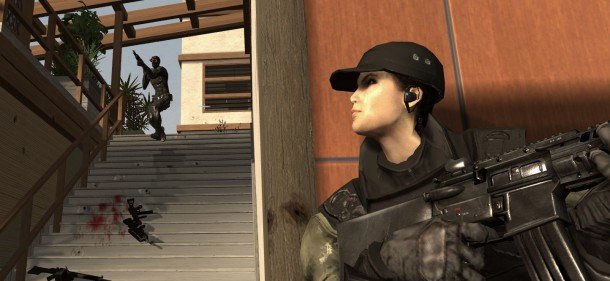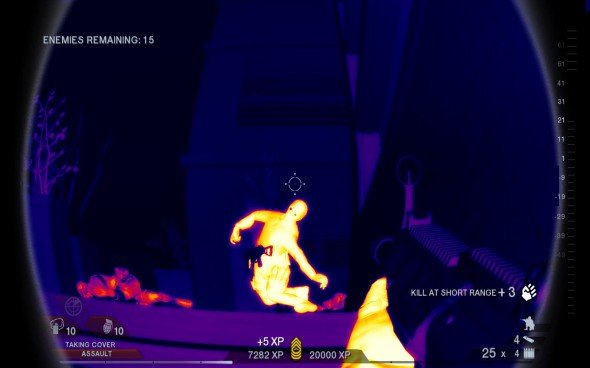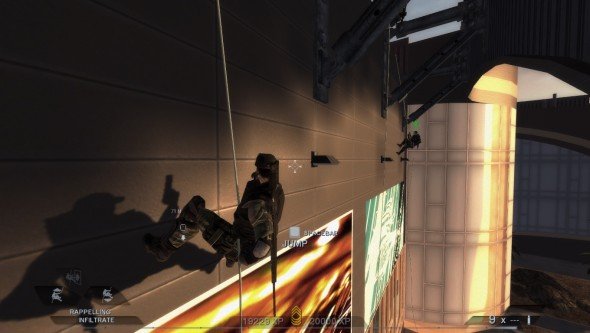Now Playing: The genius and maths of Rainbow Six: Vegas 2

This article was originally published in PC Gamer UK 218.
"LOTS OF THEM LOTS OF THEM LOTS OF THEM LOTS OF THEM!"
That was me, talking about three people, in Rainbow Six Vegas 2. Shortly afterwards I was killed, in two hits, by three people in Rainbow Six Vegas 2. The ferociously quick deaths have a way of amplifying everything: any number of people you can't kill in 0.75 seconds might as well be an army. Two's a double homicide, three's a crowd.

I went back to Vegas 2 when, at a preview event, the guys making Deus Ex: Human Revolution told me their cover system is exactly the same. The wall-hugging that happens in Vegas evidently stays in Vegas, because I couldn't remember it at all. Going back to it, I think that's because it's so intuitive: I barely even register the switch from first-person shooting to third-person cover-clinging. I instinctively want the camera to pull back and show my situation when I take cover, so when it does, I just accept it.
What I also discovered was that the game, even apart from the cover system, is brilliant. You can die so quickly and suddenly that it's not about health and damage. If you're being shot at and you're not already in cover or firing back, you're dead. So it's a game about the mathematics of risk.

Every room has a number of directions enemies could come from, so you're constantly juggling fatal uncertainties. Each entrance becomes two questions: how screwed are you if someone comes from there, and how likely is it that they will? Some directions, like directly behind you, are pretty unlikely. But none of those chances are zero.
Enemies roam. I play mostly in Terrorist Hunt mode, where the levels are just large, complex arenas with no linear structure. Terrorists have the run of the map; they'll even absail up buildings and break in through windows to find you. That means nowhere, not even the area you've just cleared, is safe.
Keep up to date with the most important stories and the best deals, as picked by the PC Gamer team.

What you find, after several nerve-shredding hours trying to survive the terrifying Murdertown Dark, is that you have to take unacceptable risks. You can't camp forever, and some areas just have no safe way in. At some point you've got to climb that ladder, reach the top of those steps, or storm out into the open.
But my calculations on the best way to do this have changed. I used to try and check every angle, as quickly as possible, knowing I wasn't being thorough as I'd like. What that gets you is this: shot. More than half the fatal threats in this game aren't obvious in a frantic sweep.

So I've started doing the opposite. I'll burst into a four-door room and, very carefully, check the left two exits. At any moment I could be shot to death from the right, and the prospect genuinely twists my gut with fear, but it's suicide to try and check every angle.
It means trusting your AI team-mates, or your friends in co-op, more than you instinctively want to. I tend to assume AI will get itself killed and friends will wander off on their own. But it works, and makes you feel strangely professional.

Professionals don't, of course, scream "LOTS OF THEM LOTS OF THEM LOTS OF THEM LOTS OF THEM!" when they see three people. That kind of shrill panic tends to come up in co-op, when me, Rich, Graham and Craig throw textbook procedure out of the breakable window and jump on the nearest fast-rope with an unintimidating "Whee!"
More: Now Playing

